Lexical Decision Task Creation Walkthrough
Welcome to another Labvanced walkthrough for the study creation walkthrough! This content will allow you to trek through one of the notable study creations in psychology and psycholinguistics, the lexical decision task (LDT). In this task, a responder needs to rapidly decide whether the presented letter combinations are words or not. The word is shown in pairs or alone, and the responder is tasked with determining the word or nonword based on the entire presentation. For instance, if presented with the word “PARROT & BRIDGE,” a person responds, “yes, both are a real English word,” but when presented with the letters “XVERA & BRIDGE,” they respond “no, one of the words is not a real English word.”
The LDT was pioneered by Meyer and Schvanveldt (1970), where the researchers aimed to understand the organization of the long-term memory system and how humans retrieve information from its storage. Their original study found the better performance of the task (respond faster and accurately) if the presented two words were semantically related than the non-related pair. This seems to indicate that word recognition also activates the related information that influences the recognition of the other related word.
The current study creation is similar to the original Meyer & Svaneveldt study (1970) with fewer trials. Their original work presented 48 associated word pairs, and the responders decided whether the word pairs were real (e.g., COFFEE and TEA) or not (e.g., COFFEE, SOHDA). Similar to the Stroop task creation, this paradigm in Labvanced is a relatively straightforward process. To systematically cover from beginning to the end, this walkthrough the steps in 5-parts, comprising:
- Variable determination (IVs & DVs)
- Frames setup (fixation, target, feedback messages)
- Stimuli setup (visual & auditory)
- Events setup
Without further ado, let’s dive into creating the first task by determining the important variables for the study structure.
Part I: Variable determination
As with any study preparation, determining the variables would be important for the study structure. For this, we could use the Factor Tree to determine the factors (or independent variables) and their associated levels (or categories). For the purpose of the current multimodal Stroop, the factors and their levels are as follows:
- Factor 1 - word/nonword
- a. Level 1 - word
- b. Level 2 - nonword
- Factor 2 - semantic relationship
- a. Level 1 - related
- b. Level 2 - unrelated
The full display of this setup in the Factor Tree is also depicted below (see Figure 1A). With this 2 X 2 orthogonal setup, Labvanced will create 4 different conditions (see Figure 1B) in the Trials & Conditions with each factor combination. As depicted, this leads to all possible combinations of word/nonword X semantic relatedness. Also, we can determine the number of trials per condition, and we will determine 5 trials per condition - a total of 20 trials.
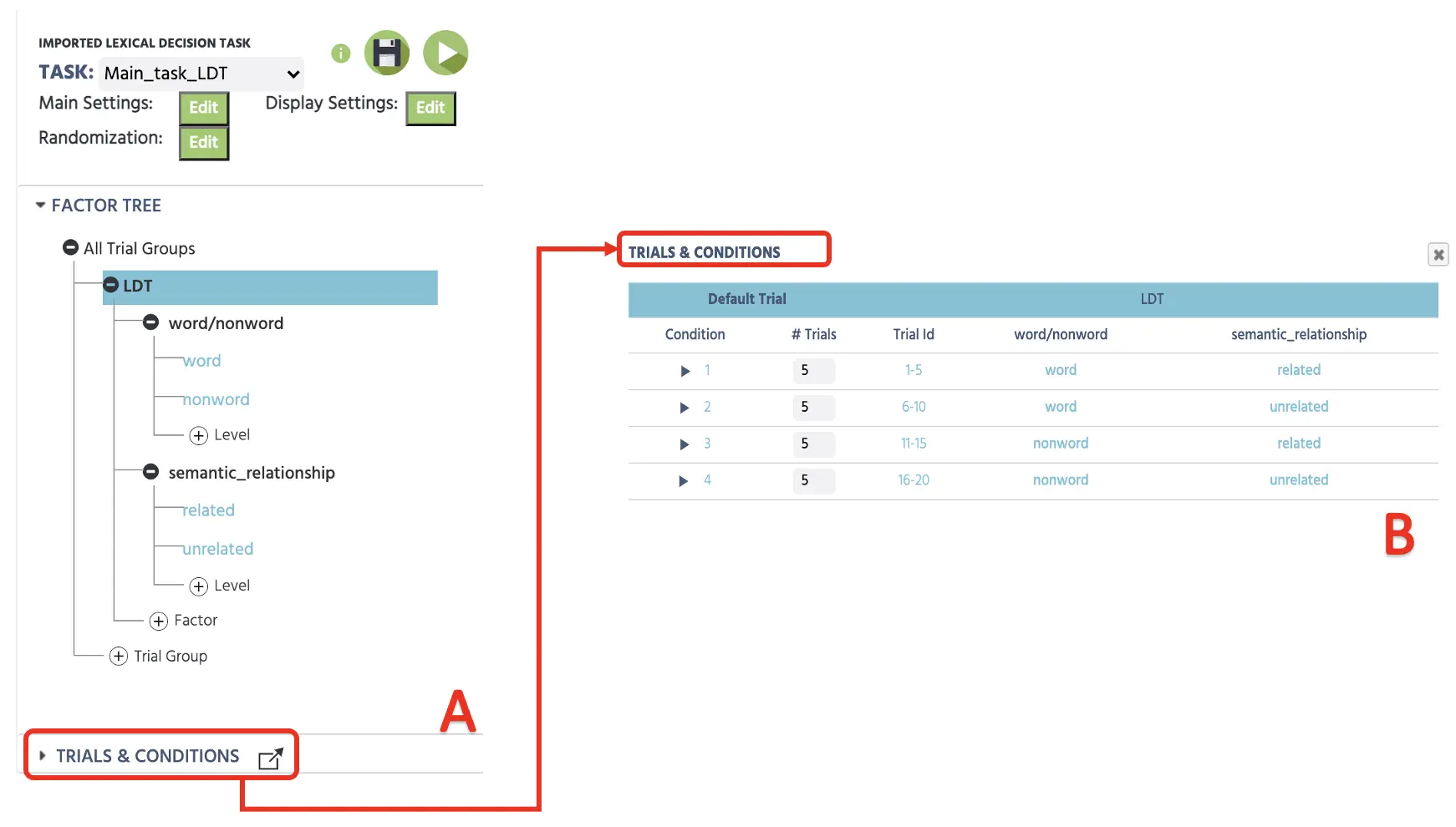 Figure 1. Initial canvas setup depicting determining factors with levels in the Factor Tree (A) and subsequent combinations with 4 trials in each condition (B).
Figure 1. Initial canvas setup depicting determining factors with levels in the Factor Tree (A) and subsequent combinations with 4 trials in each condition (B).
For the trial randomization, the Labvanced will vary the trial presentation depending on the Randomization Setting (see Figure 2). The conventional approach is proceeding with the first Random option that will generate a random trial sequence, but this could be pre-determined with different options (Fixed by Design or Hand) in the same setting. For now, the current setup will proceed with Random without any constraints to randomly vary the trial sequence. For more information about the Randomization setting, please use this link for more information.
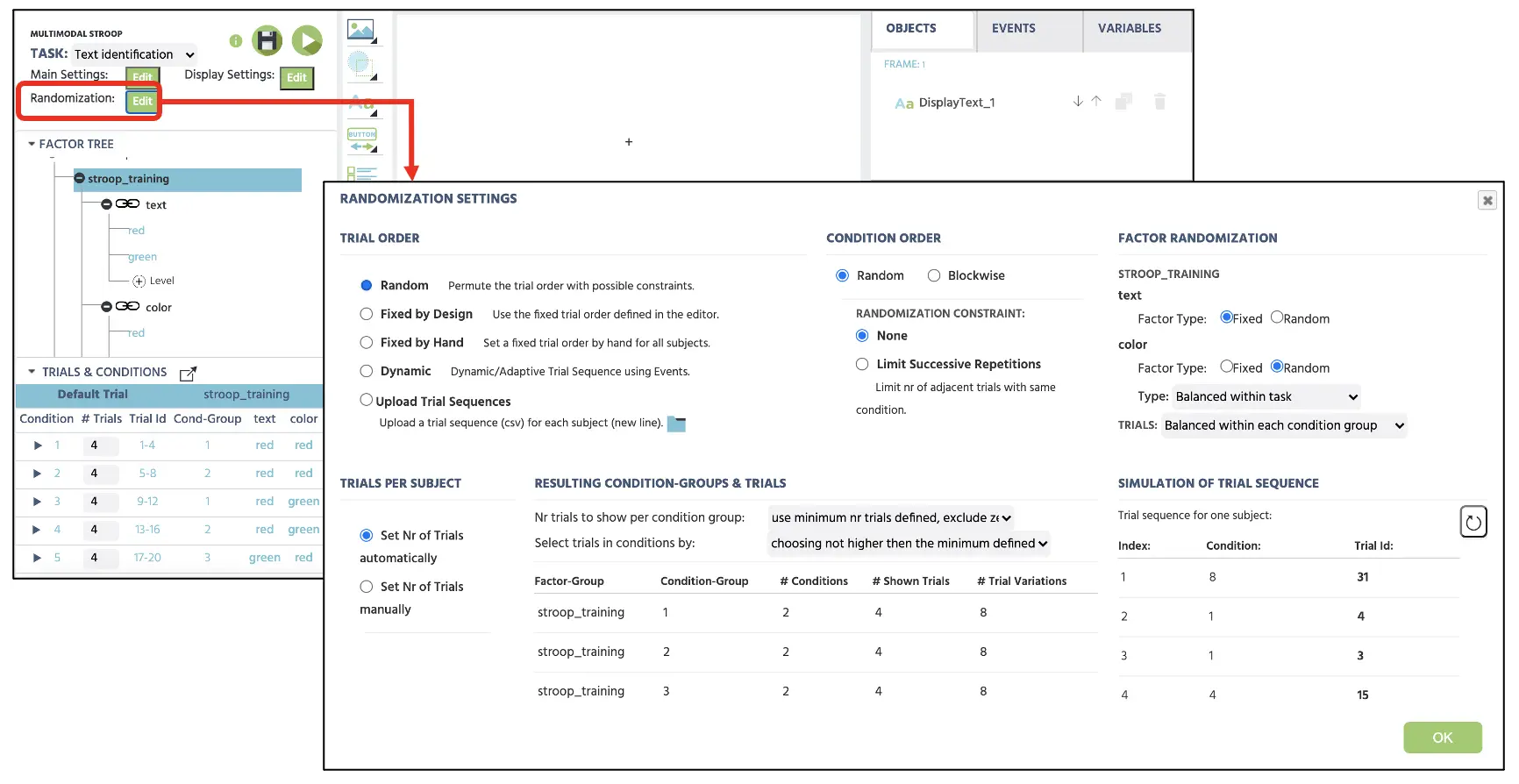 Figure 2. Display of Randomization setting with selected Random option to randomly present the trials without any constraints.
Figure 2. Display of Randomization setting with selected Random option to randomly present the trials without any constraints.
Part II: Frames setup
The second part of this walkthrough will create frames (stimuli presentation) that the participants will see during their study participation. Overall, the current LDT will follow the general procedure below (see Figure 3). As depicted, a trial will begin with a fixation cross (frame 1) for 500 ms followed by the presentation of two words (frame 2). The participant will require to press “Y” if they determine both are real words or press “N” if at least one of the words is not a real word. The keypress will follow with the feedback messages, Correct (frame 3) or Incorrect (frame 4). The feedback will display for 1000ms.
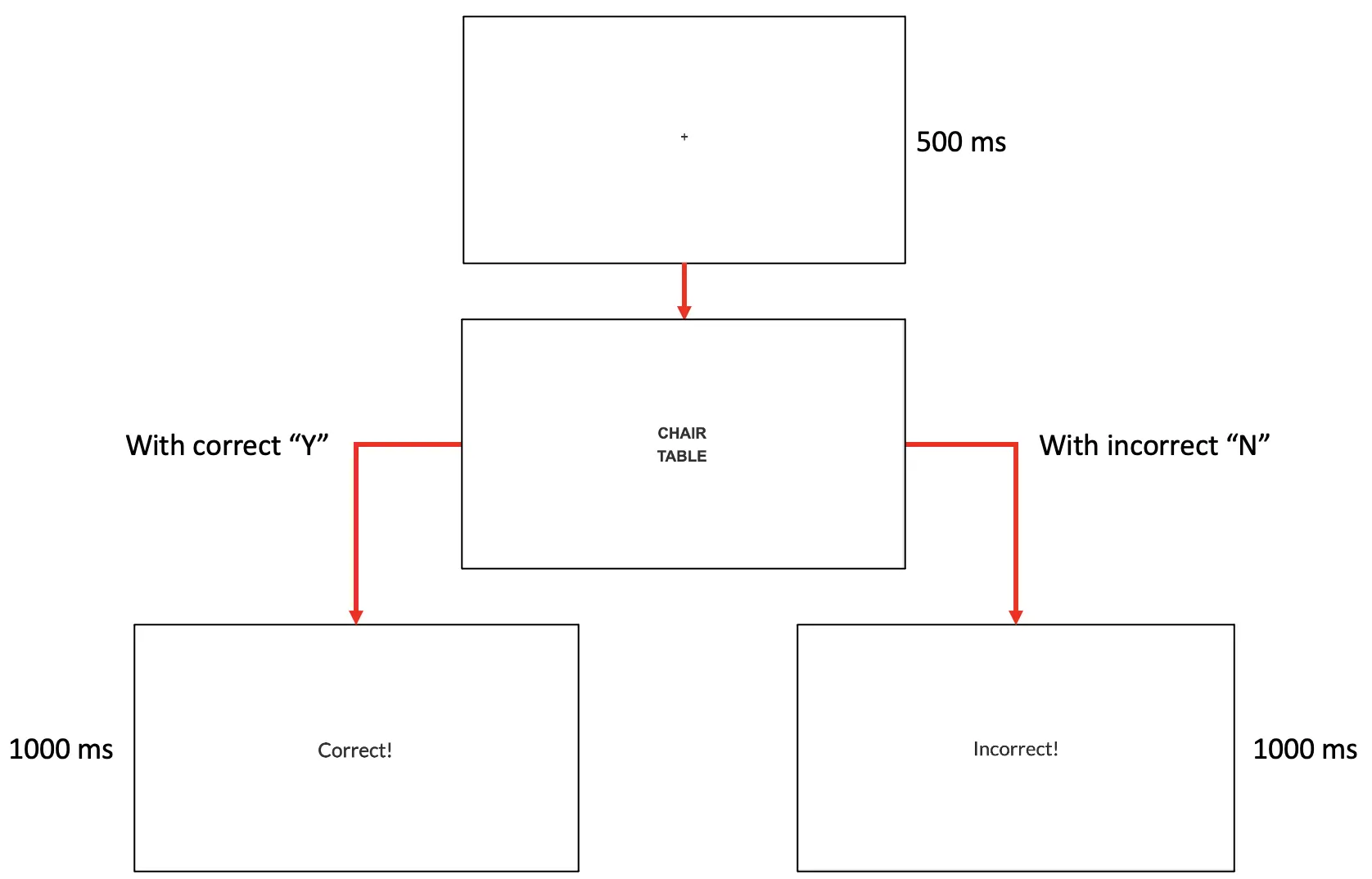 Figure 3. Display of sample trial. In this example that display both real words with related semantics, Y-keypress is associated with a correct response indicating both word stimuli are real words, and N-keypress is associated with the incorrect response that will lead to the incorrect feedback message.
Figure 3. Display of sample trial. In this example that display both real words with related semantics, Y-keypress is associated with a correct response indicating both word stimuli are real words, and N-keypress is associated with the incorrect response that will lead to the incorrect feedback message.
The construction of these frames will begin by clicking on the Canvas button at the bottom of the Labvanced display (see Figure 4A). Clicking this 4 times will display 4 new frames, and it would be ideal to immediately name each frame (e.g., fixation, target, correct, incorrect) to maintain the study organization (see Figure 4B). Before proceeding, it would be essential to click on the Default trial to make sure this row is highlighted (see Figure 4C). This part serves as the default template for all the conditions below. While highlighted, any changes in the 4 frames will apply to all conditions, so this would be convenient to avoid unnecessary and repetitive setups. For example, while highlighting the Default trial, adding the fixation cross display for a certain duration will apply the same presentation to all the 48 trials below in the Trials and Conditions.
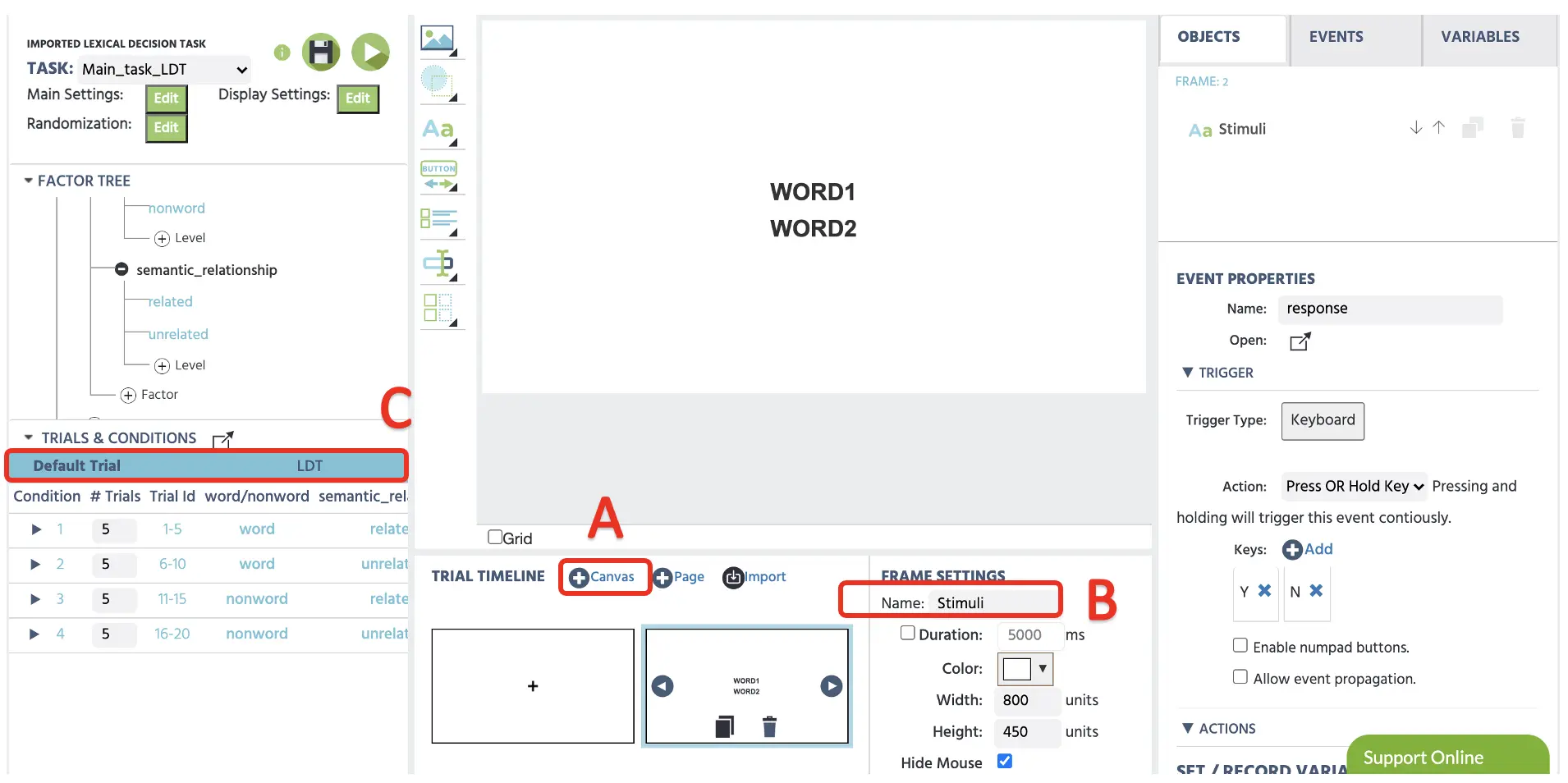 Figure 4. Display of sample trial with Canvas frame creation (A), frame name change option (B), and highlight Default Trial (C).
Figure 4. Display of sample trial with Canvas frame creation (A), frame name change option (B), and highlight Default Trial (C).
To create the fixation cross in the first frame, we can click on the Display Text (see Figure 5A) to implement the textbox in the canvas. Here, we can type in the + in the box with a font size 36 and position it in the center of the display. We could also type in the specific X & Y frame coordinates at the Object Properties on the right side for the precise center position. If we want to upload the image containing the fixation cross or different stimuli, the Media option (see Figure 5B) can present images, videos, audios, etc.
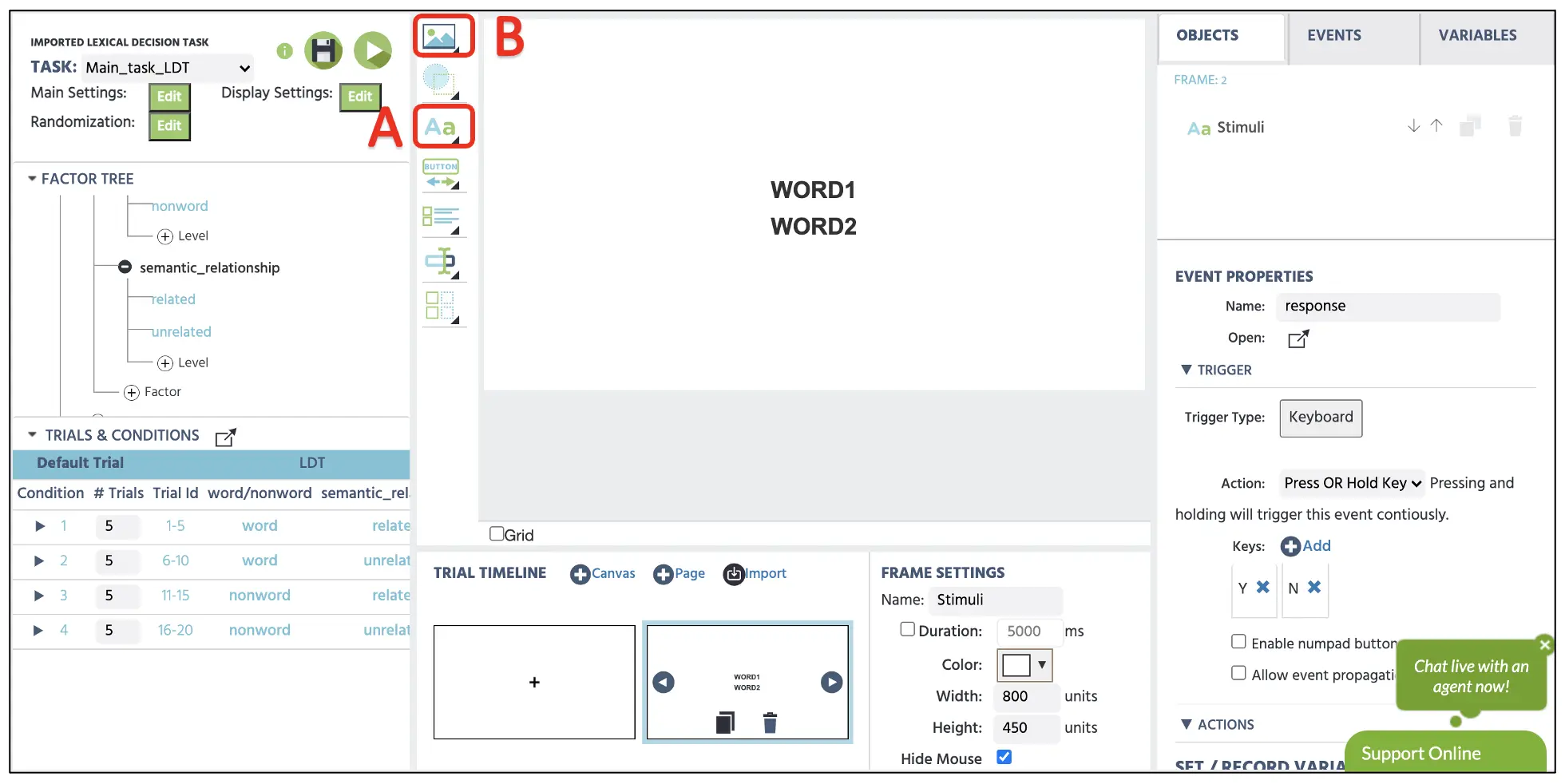 Figure 5. Display of fixation frame creation with the Display Text option(A). Images, videos, and audios could be presented via Media option (B).
Figure 5. Display of fixation frame creation with the Display Text option(A). Images, videos, and audios could be presented via Media option (B).
Creating the feedback messages (frame 3: Correct; frame 4: Incorrect) involves the same process as the fixation cross, where the messages can be typed into the textbox with a repositioning option in the center of the display (see Figure 6). With frames 1, 3, 4 out of the way, the next part of the walkthrough will involve target creation in frame 2.
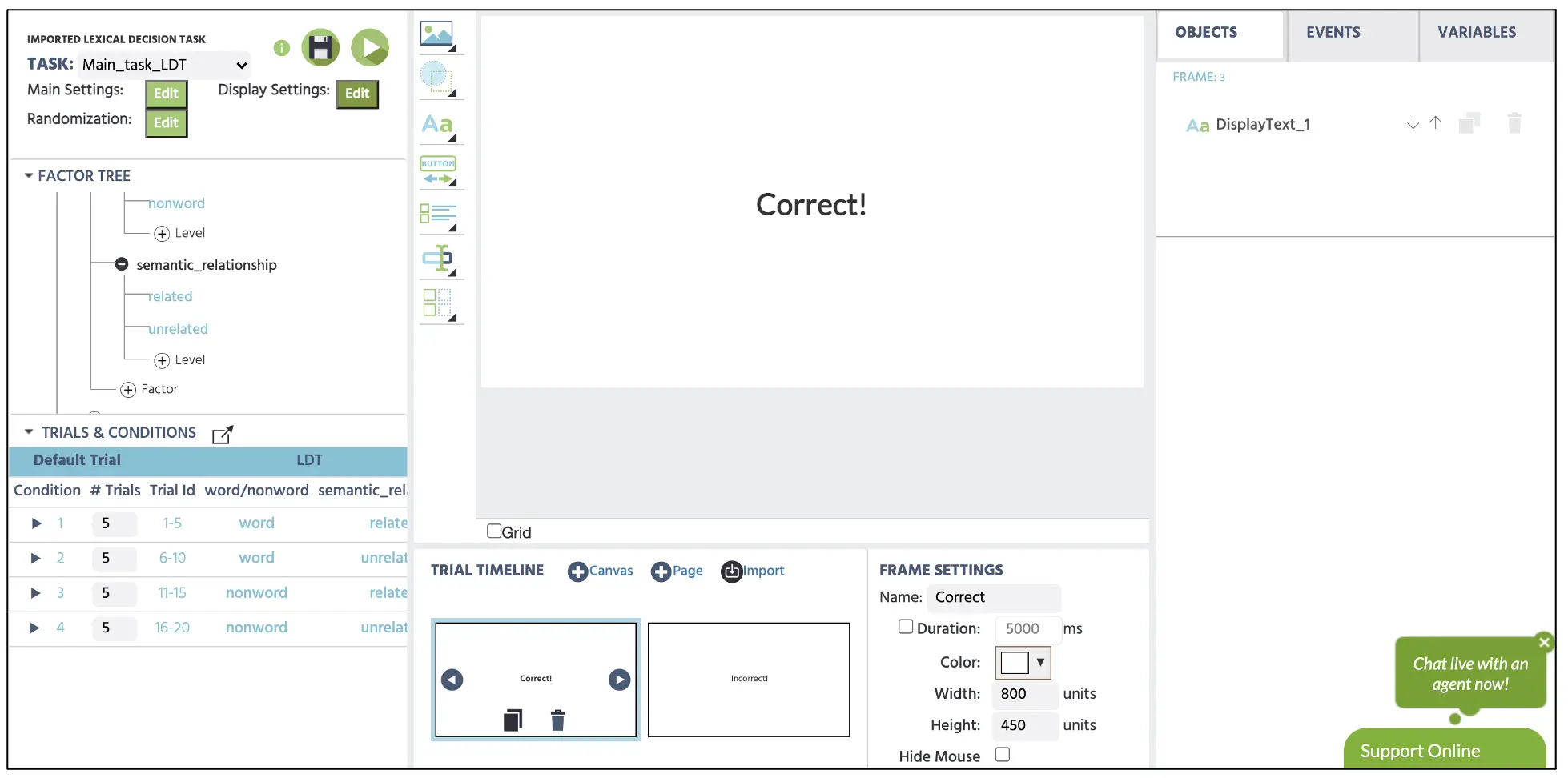 Figure 6. Sample display of the correct feedback in frame 3.
Figure 6. Sample display of the correct feedback in frame 3.
Part III: Stimuli setup
To create frame 2: word presentation, it will begin with clicking the Display Text option (see Figure 5 above). This will prompt the textbox to display that we could type the words and adjust the size and placement from the Object Properties on the right-hand side.
Importantly, we want to ensure that the correct text pairs are displayed depending on the respective condition. This can be referenced using the Trials and Conditions that we already built in Part I. For example, in the first condition, we want to make sure that the text pair contains real words semantically related to each other (e.g., CHAIR & TABLE; figure 7). However, in the second condition, we are still presenting two real word pairs, but they will be semantically unrelated. As such, we can reference this Trials and Conditions guide for the stimuli set up and ensure all possible conditions are accounted for in our study.
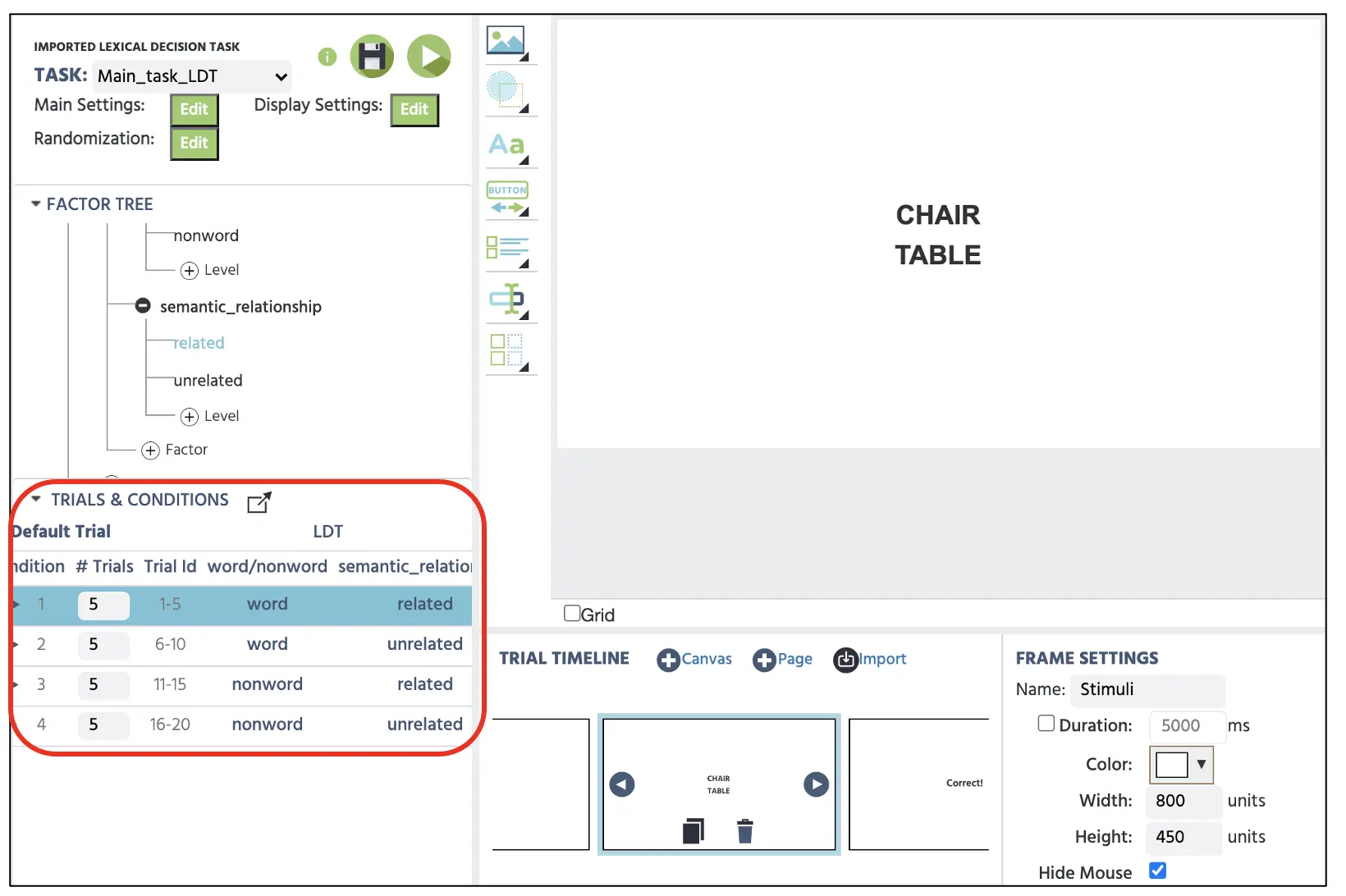 Figure 7. Display of canvas display of frame 2 stimuli presentation. Following the first condition in the red box, this trial presents a real word pair with semantic relatedness. In such a trial, y-keypress (yes) would be associated with the correct response.
Figure 7. Display of canvas display of frame 2 stimuli presentation. Following the first condition in the red box, this trial presents a real word pair with semantic relatedness. In such a trial, y-keypress (yes) would be associated with the correct response.
The next part will involve setting the Events system with the frame setup completion with each stimuli presentation. Here, we will ask Labvanced program to follow the logical sequence of how the frames should present with respective stimuli for a specific duration and record vital information such as reaction times (ms) and correct responses.
Part IV: Events setup
Before creating the Events system, two new variables (reaction time and correct response) will need to be created to serve as the dependent variable measurements. To create new variables, we can click on the Variables on the top-right display and select Add Variable (see Figure 8). From the new variable window, we will proceed with the following steps for the names and types. These variables will store important behavioral measurements of how quickly the participant discriminated the target and their respective accuracy performance. Thus, the two new variables will be:
- Reaction time - measured in milliseconds from the frame onset
- Correct - response accuracy (1=correct; 0=incorrect)
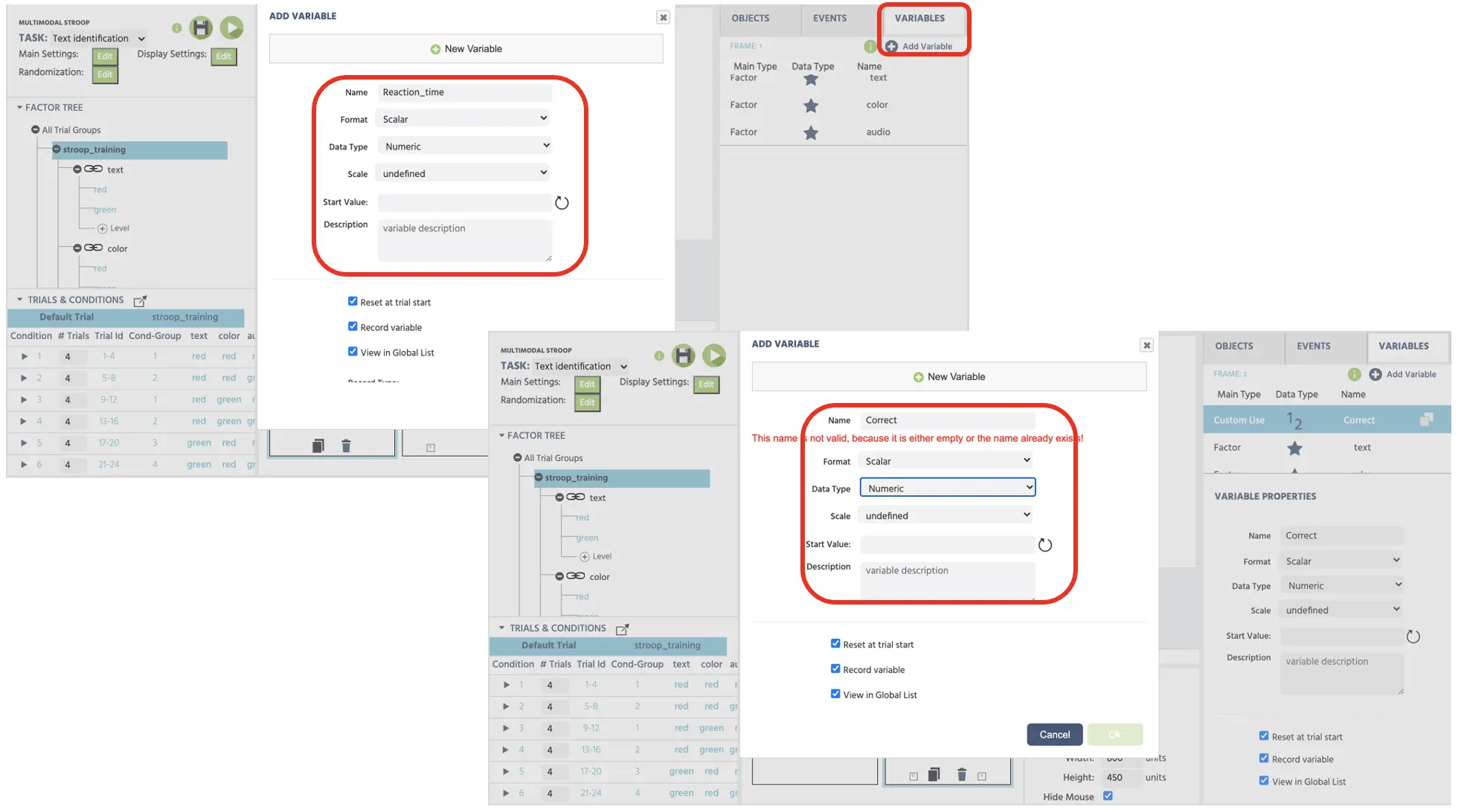 Figure 8. Display of new variables (response time & correct) creation. Both variables are set with the numeric data type.
Figure 8. Display of new variables (response time & correct) creation. Both variables are set with the numeric data type.
Following the general frame sequence from Part II (see Figure 3 above), the rest of the Events setup will split into 4 sections to detail the setup construction for each frame.
Frame 1 Events: Fixation cross
In this frame, we want to present the fixation cross at the center of the display for 500 ms. Therefore, the logical sequence we will approach is:
- As soon as the frame starts
- Wait 500 ms
- And then jump to the next frame
To implement this in Events, click on the Events on the top right next to the Variables and select Frame Event (on this frame only). In the first window dialogue, we can name the Events as “Start” and click next to proceed to the Trigger option. Here, the trigger type is Trial and Frame Trigger → Frame Start (following the 1st logical sequence above). With this trigger, we want to initiate the 500 ms frame delay action (2nd logical sequence); therefore, this can be set with Add Action → Delayed Action (Time callback) and set 500ms in the delay box (see Figure 9). Finally, to execute the last logical sequence, click on Add Action in the Action Sequence box and proceed with Jump Action → Jump to → select the Next Frame (see Figure 9). The Labvanced will always follow this logical sequence for the fixation cross-presentation for all the trials with this setup.
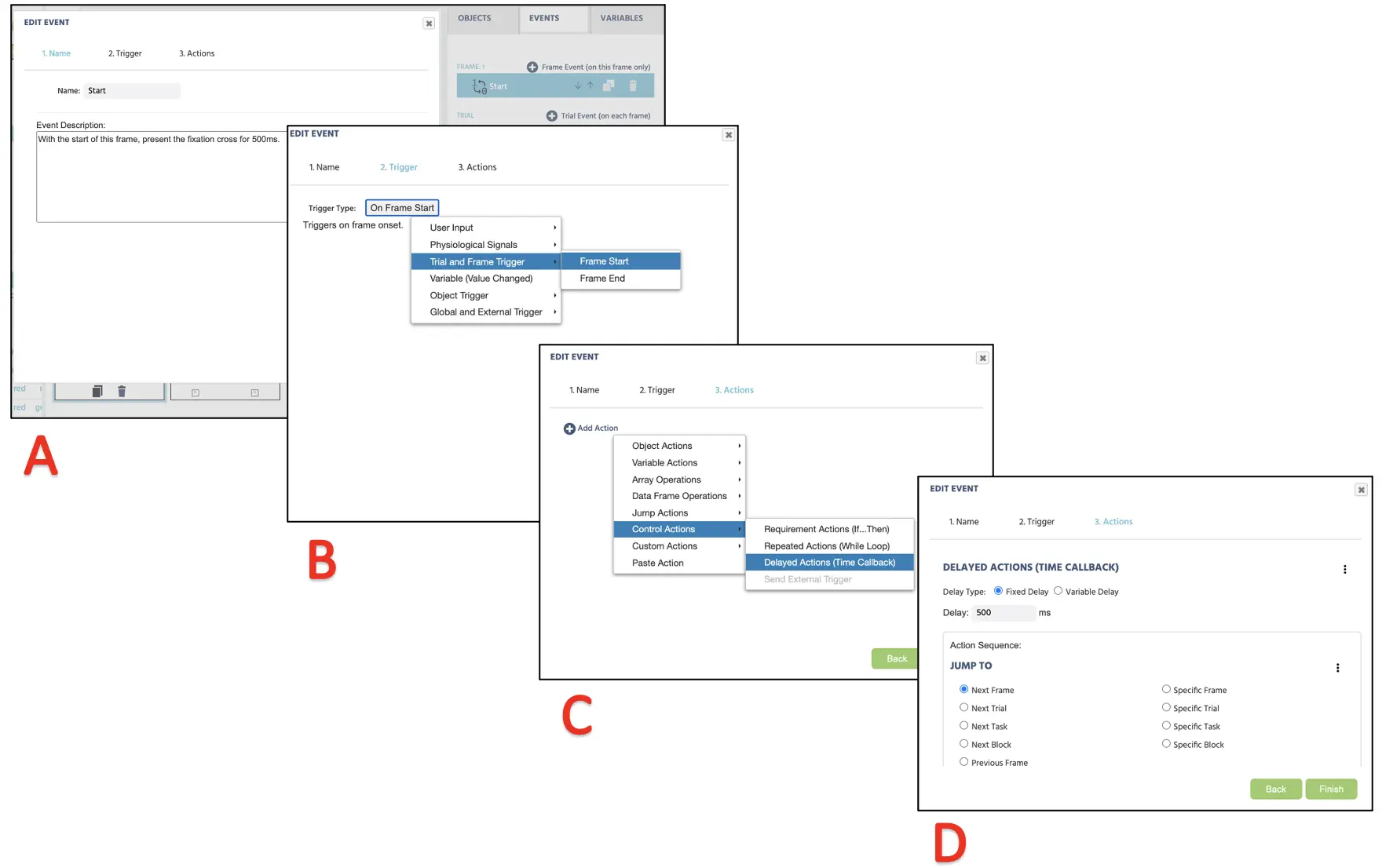 Figure 9. Display of Event creation for fixation cross (frame 1) presentation following Event naming (A), Trigger (B), Action determination (C), and desired Action execution.
Figure 9. Display of Event creation for fixation cross (frame 1) presentation following Event naming (A), Trigger (B), Action determination (C), and desired Action execution.
Frame 2 Events: Target presentation and response recording
As previously mentioned, the task requires participants to evaluate the word pair as quickly and accurately as possible and determine whether both are real words. Therefore, we will assign y-keypress as indicating “yes” response (both are real words) and n-keypress as indicating “no” (at least one is not a real word). To construct this conditional argument in Labvanced, we can use the Text column in the Trials & Conditions to determine whether the participant’s keypress matches the associated trial. This would allow for the conditional argument and record the Correct variable with either correct/incorrect measurement. Therefore, this frame would be comprised of this logical sequence:
- As soon as the frame starts
- Present the words
- If the keypress response is correct → record Correct = 1 → Jump to the Correct feedback (frame 3)
- If the keypress response is incorrect → record Correct = 0 → Jump to the Incorrect feedback (frame 4)
To create this Event, we will again begin with clicking Events and select Frame Event (on this frame only). Before proceeding, ensure that the Default Trial is highlighted so the Events will be applied to every trial. Since this Event is indicative of a participant's keypress, the trigger would be the User Input → Keyboard Trigger. Here we can establish two possible keypresses (see Figure 10), which are “Y” and “N.” After clicking next, the action sequence will proceed with Control Actions → Requirement Actions (If...then).
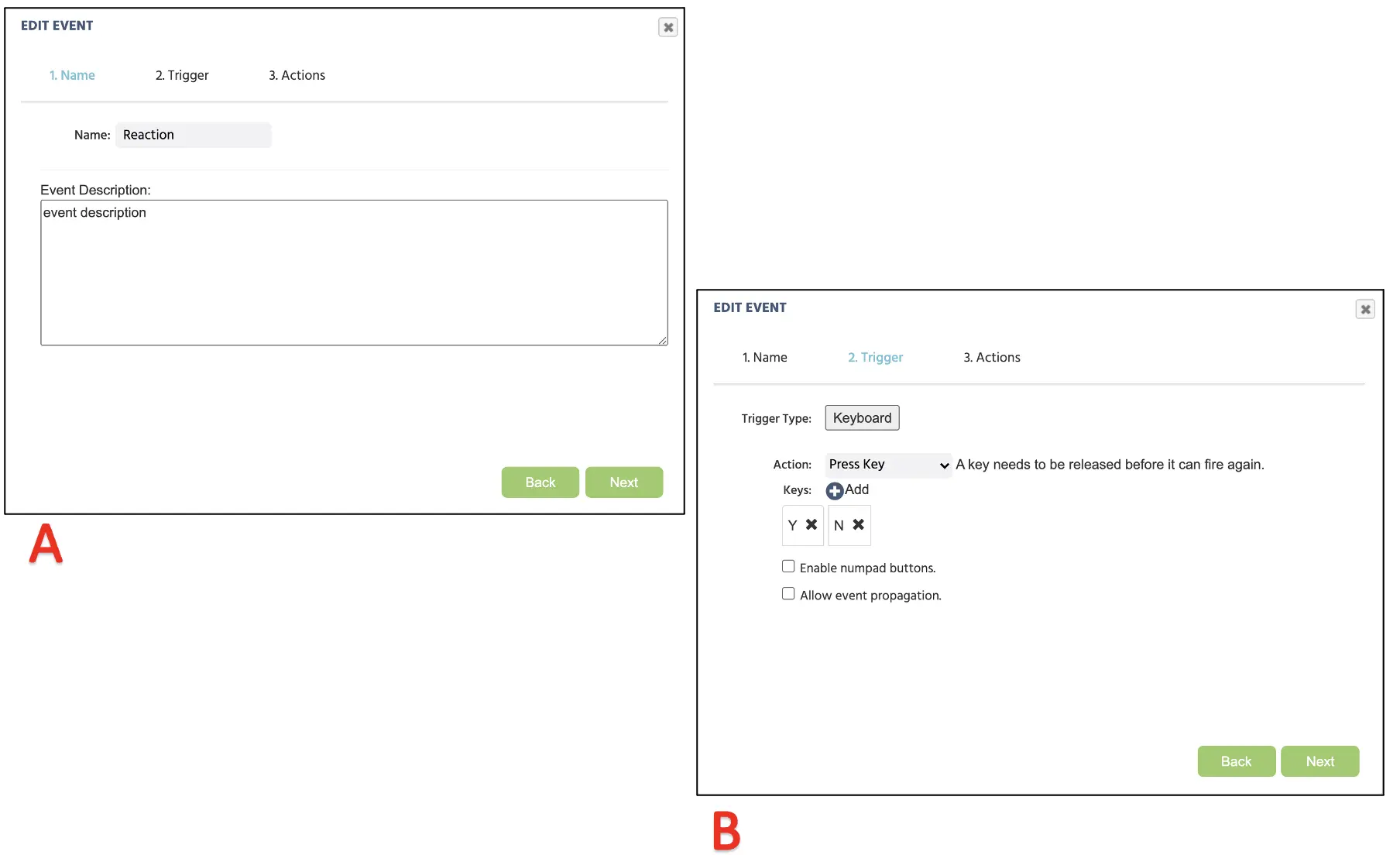 Figure 10. Display of Event creation for keypress assignment following Event naming (A), Trigger assignment with allowable keypress responses (B).
Figure 10. Display of Event creation for keypress assignment following Event naming (A), Trigger assignment with allowable keypress responses (B).
At the If part of this dialogue, we will establish the correct/incorrect condition with the target and associated keypress. Here, we can set the left part as the Text variable (see Figure 11) and set the right side by inserting a “word” string. Right below, we need one more set of conditions and set the left side Trigger(keyboard) → ID of Key. Then, on the right side, we can type in the letter “Y” (make sure this is capitalized).
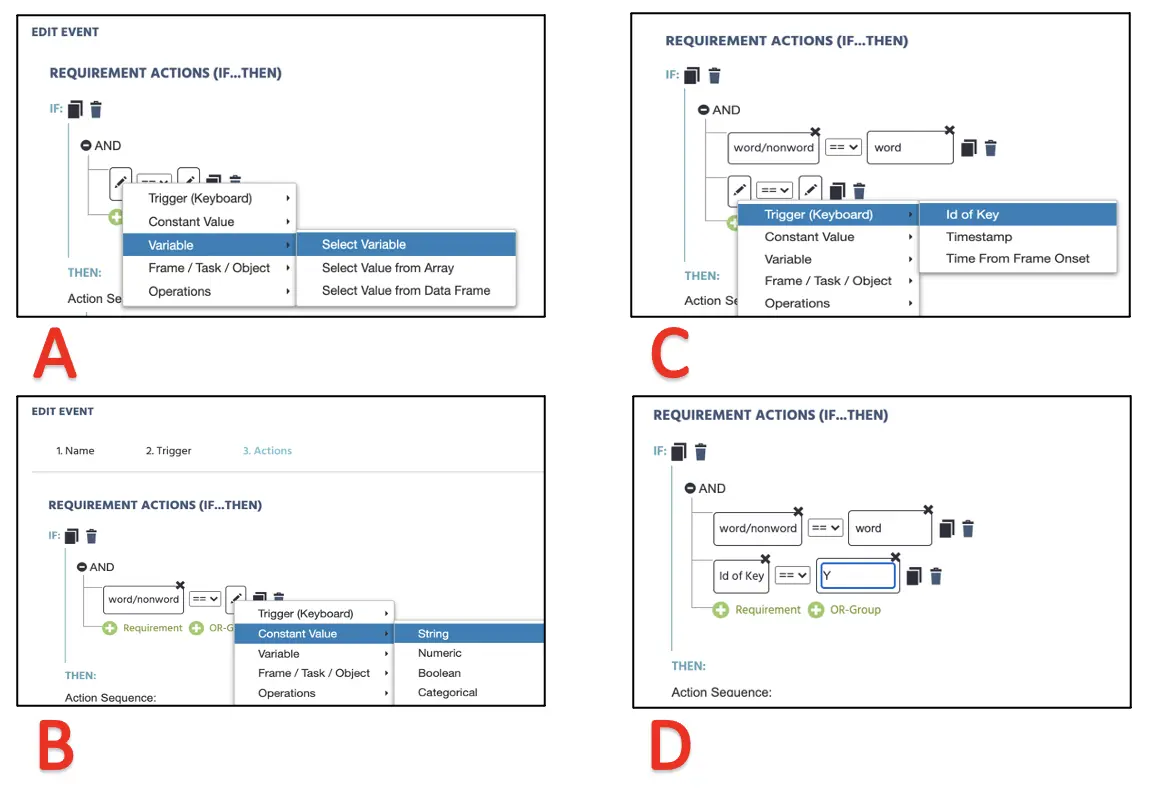 Figure 11. Display of Event creation for keypress assignment following variable determination (A), associated condition (B), and keypress response assessment (C & D).
Figure 11. Display of Event creation for keypress assignment following variable determination (A), associated condition (B), and keypress response assessment (C & D).
Proceeding to the Then part below, we want to establish the program’s action based on the established IF condition above. Since the “Y” key is the correct response when the text pairs are real “word,” we would want to associate this as correct in the Correct variable and present the Correct feedback message. To do this, we can Set/Record variable: Correct on the left and insert integer 1 on the right (see Figure 12). Right below, click on the Add Action to add Jump Action (similar to fixation frame), but this time we would want to select Specific Frame (Correct) to display the “Correct” feedback message. With this, we have established the conditional sequence to ask the Labvanced program to record the participant response as correct if the D keypress was made with the presentation of the “red” text display.
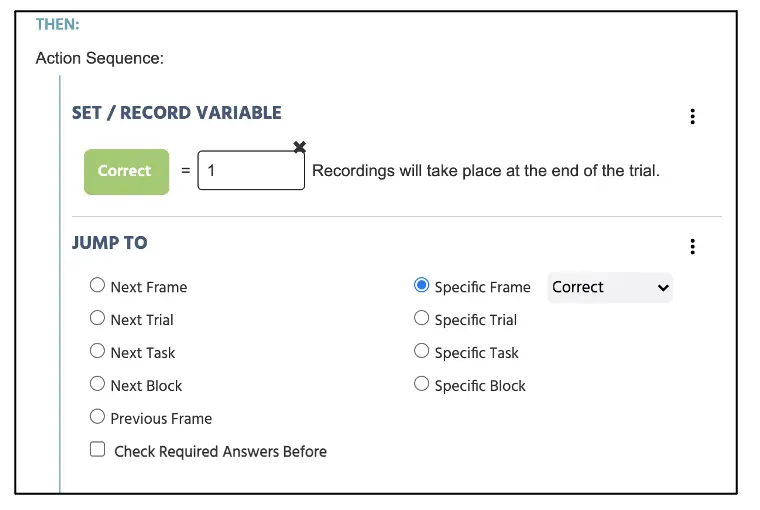 Figure 12. Display of Event creation proceeding figure 12. The Set/Record determines the Correct variable with 1 = correct (0 if otherwise) if the conditions are satisfied with the figure 12 setup.
Figure 12. Display of Event creation proceeding figure 12. The Set/Record determines the Correct variable with 1 = correct (0 if otherwise) if the conditions are satisfied with the figure 12 setup.
Replicating the same procedure, we would also need to create the condition for the “nonword” text with the correct keypress (see Figure 13A). Finally, we can then click on the Else to add the final Set/Record variable: setting Correct to 0 with an incorrect response and leading to the Incorrect feedback frame (see Figure 13B). This final argument pertains to if the keypress response does not satisfy the previous two correct arguments, we ask the program to record as incorrect (0).
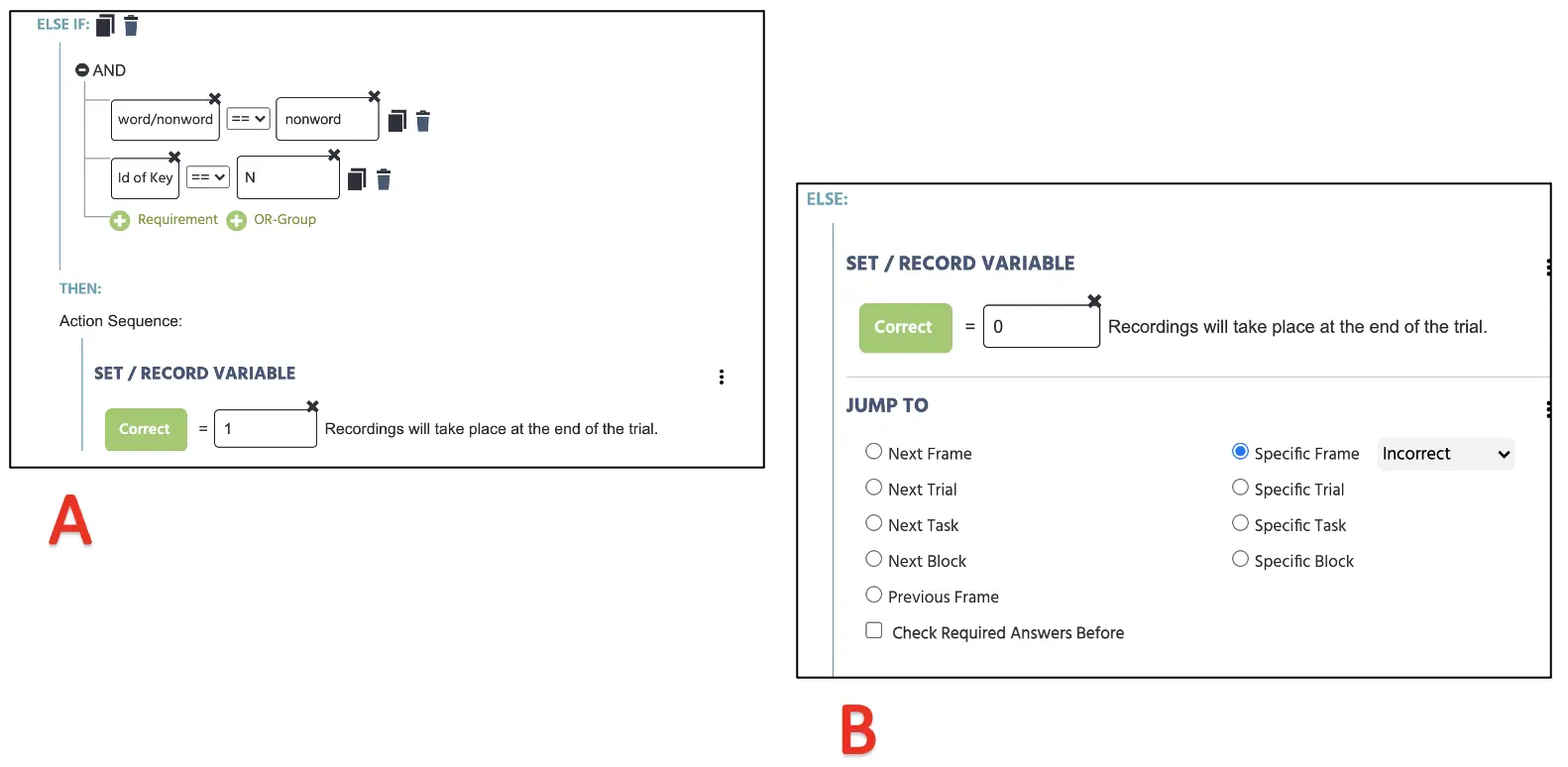 Figure 13. Display of Event creation proceeding figure 13, replicating the process for the green text condition (A) and setting the incorrect (0) response if none of the correct conditions are satisfied.
Figure 13. Display of Event creation proceeding figure 13, replicating the process for the green text condition (A) and setting the incorrect (0) response if none of the correct conditions are satisfied.
Frames 3 & 4 Events: Feedback presentation
The Events in the feedback frames containing correct (frame 3) and incorrect (frame 4) messages will mirror the same process as the fixation frame. Whichever keypress the participant makes, we want to present the feedback at the center of the display for 1000 ms and proceed to the next trial. Therefore, the logical sequence we will approach is:
- As soon as the frame starts
- Wait 1000 ms
- And then jump to the next trial
To implement this in Events, click on the Events on the top right next to the Variables and select Frame Event (on this frame only). In the first window dialogue, we can name the Events as “Start” and click next to proceed to the Trigger option. The trigger type is Trial and Frame Trigger → Frame Start (following the 1st logical sequence above). With this trigger, we want to initiate the 1000 ms frame delay action (2nd logical sequence); therefore, this can be set with Add Action → Delayed Action (Time callback) and set 1000ms in the delay box. Finally, to execute the last logical sequence, click on Add Action in the Action Sequence box and proceed with Jump Action → Jump to → select the Next Trial. With this setup, the Labvanced will always follow this logical sequence for the feedback presentation for both frames 3 & 4 across all trials. In general, this step mirrors the same procedure and figures that could be used as the reference.
Final note
With this final setup, we now have a working LDT comprised of 20 trials in this block. Depending on the study, researchers may need to present multiple sets or blocks of 20 trials to the participants for their theoretical inquiry. Fortunately, Labvanced allows organizing the study in the Study Design page to organize different blocks (see Figure15). The only thing that remains in this walkthrough is the consent form, instruction document, demographic questions, and other protocols, but that varies based on the researcher and institution to halt this walkthrough. For more information on text creation, please view our resources link for additional information. Furthermore, the constructed LDT template is also available in ur Library using this link along with other experimental paradigms. With that said, we hope for the best in all your scientific endeavors and hope that this walkthrough serves as an important cornerstone for your study construction.